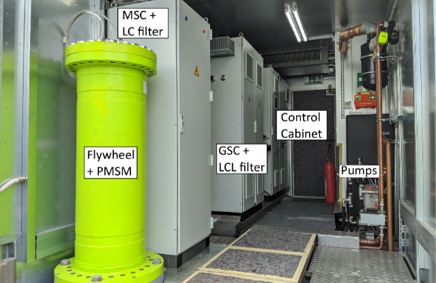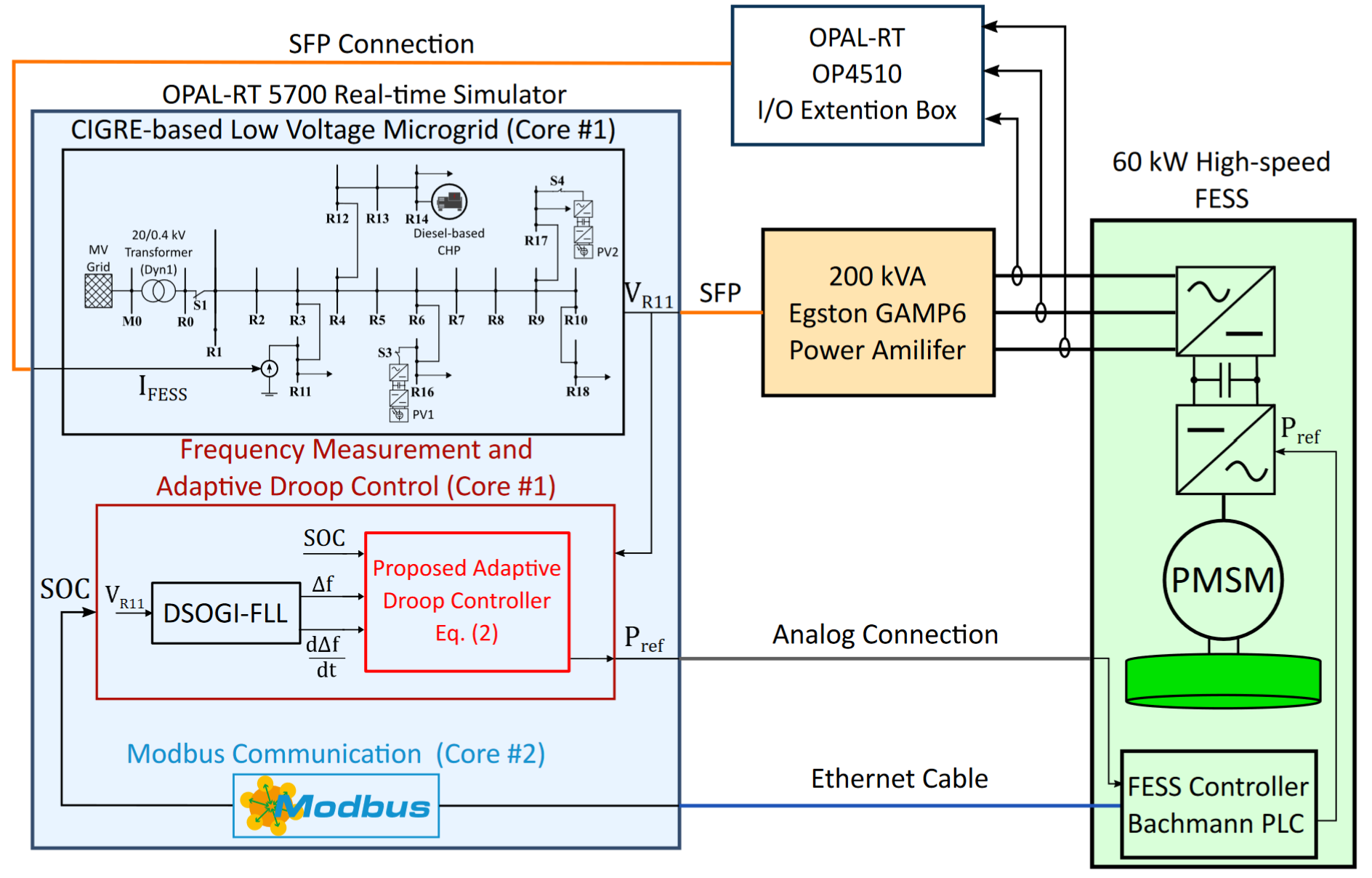Energy Storage
Flywheel
Energy storage systems will play a fundamental role in the future low-inertia power system. Aside from batteries, fast-dynamic energy storage systems are needed in order to correct power unbalances in the short-term and with continuous variations. If this task is taken over by batteries, it can strongly reduce their lifetime
In order to investigate the possible support of the primary frequency control in the power grid, in the PHIL Lab we have installed a 120kW high-speed flywheel from the company Stornetic and it has been connected as a test object to our 1MVA PHIL test field [Link to the PHIL Facility Webpage]. The high-speed Flywheel allows fast power variations without degradation of the storage capacity, that in batteries can impact strongly on their lifetime.

As an example of the PHIL testing, several benchmark networks have been simulated to prove the Flywheel performances. As network environment, the power network "Microgrid Benchmark" suggested in [1] was simulated on our Opal-RT 5700 real-time simulator with a time step of 24µs.
To connect the flywheel to the simulation in the real-time simulator, the common "Voltage-type Ideal Transformer Method" is used, where the real test object is represented in the simulation like a current source at the connection point. The simulated voltage at this point is sent digitally to our power amplifiers from Egston as a setpoint value. The amplifiers supply real busbars, to which the flywheel storage is connected, with this voltage. The resulting current at the connection of the flywheel is then measured and sent back to the simulator as a new current value for the simulated current source. In the next calculation step, this new current value is used to calculate the new target voltage.
This approach allows to implement complex control strategies in a flexible and safe way, without accessing the Flywheel. As in [2], a novel adaptive-inertia control algorithm has been implemented in the real time simulator OPAL-RT and the new power set-point is sent in real time to the Flywheel. This allows to validate the proposed approach also in comparison with existing approaches, already validated by previous researchers, and thus used as benchmark.

[1] Papathanassiou, Stavros, Nikos Hatziargyriou, and Kai Strunz. "A benchmark low voltage microgrid network." Proceedings of the CIGRE symposium: power systems with dispersed generation. CIGRE, 2005. [2] Shahab Karrari, Giovanni De Carne, Mathias Noe, Adaptive droop control strategy for Flywheel Energy Storage Systems: A Power Hardware-in-the-Loop validation, Electric Power Systems Research, Volume 212, 2022, 108300, ISSN 0378-7796, https://doi.org/10.1016/j.epsr.2022.108300. (https://www.sciencedirect.com/science/article/pii/S0378779622004874)
